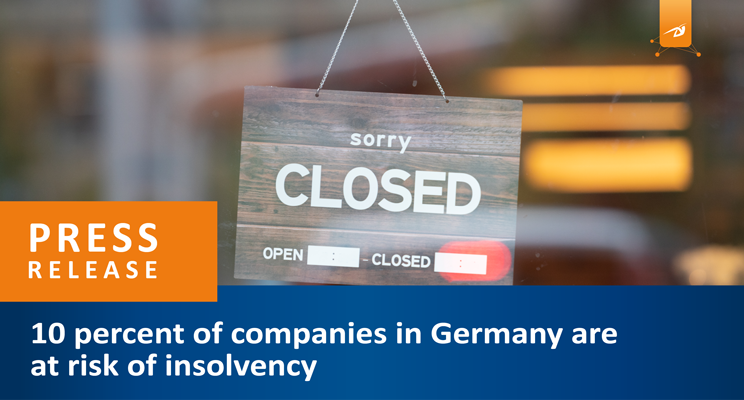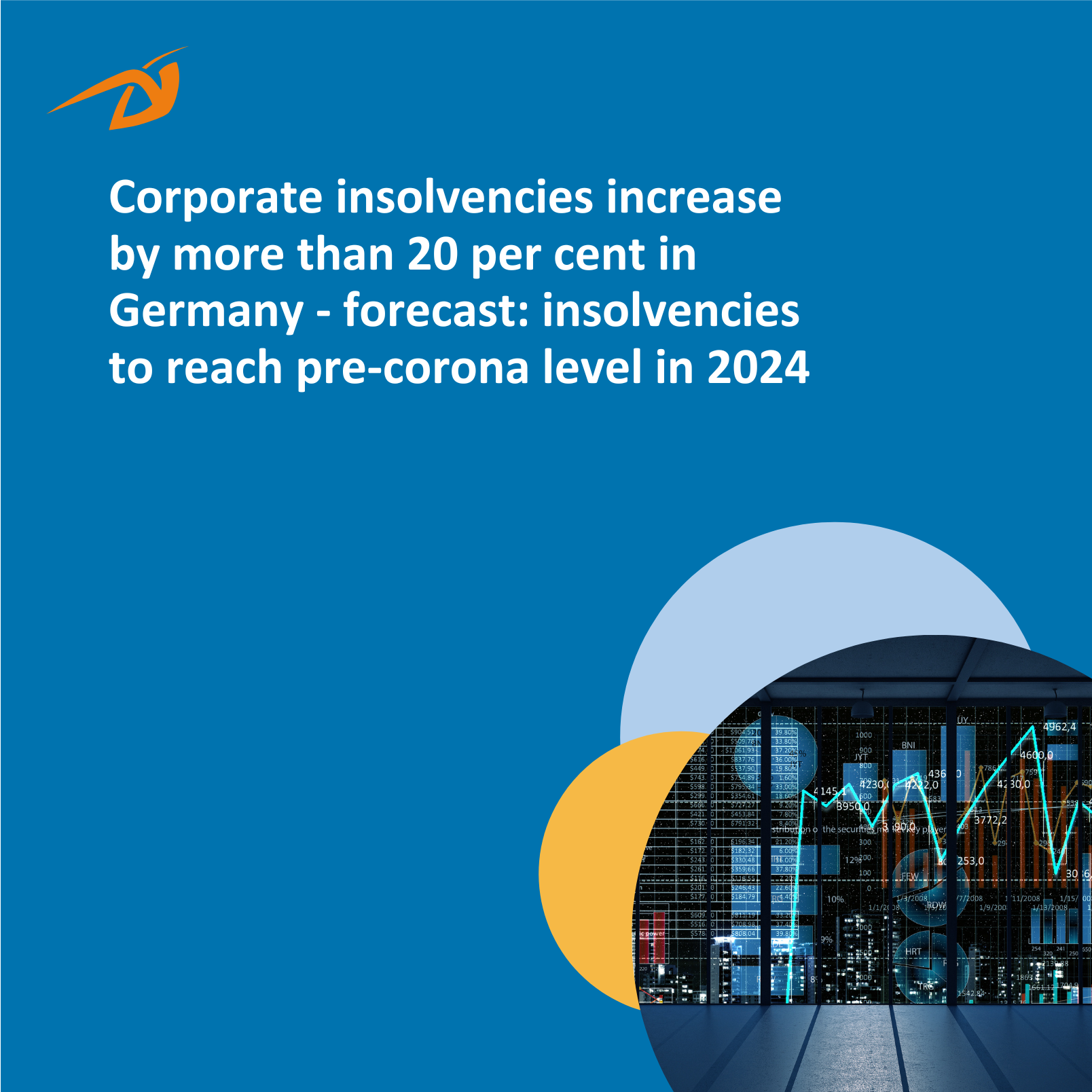-
Corporate insolvencies increase by more than 20 per cent in Germany - forecast: insolvencies to reach pre-corona level in 2024
Read MoreLast year, 17,847 companies filed for insolvency in Germany. This represents a 22.4 per cent increase in company insolvencies...
-
CRIF and Anonos Join Forces to Deliver Responsible AI Solutions Through Privacy-Preserving Synthetic Data in the Age of Generative AI
Read MoreNew York City and Bologna, May 23, 2023 - CRIF and Anonos - an innovator in enterprise data privacy, security and enablement,...
-
Corporate insolvencies rise by 4.2 percent in Germany - moderate increase in corporate bankruptcies forecast for 2023
Read MoreDuring the last year, 14,578 companies filed for insolvency in Germany. This represents an increase of 4.2 percent in corporate...
-
New Supply Chain Act since January: Synesgy platform makes collecting relevant information from suppliers particularly easy
Read MoreSupply chain due diligence act (LkSG) will become a data and IT challenge for many companies - more than 3,600 companies will be...
One in ten German companies face insolvency risk from energy crisis
More than 300,000 companies in Germany are currently having financial problems. This is shown by a current evaluation by the information service provider CRIF on the solvency and over-indebtedness of companies in Germany.
For the analysis, CRIF examined almost 3 million companies in Germany with regard to their creditworthiness and financial strength. This includes, among other things, information in the balance sheets, profit and loss accounts, sales figures, payment experiences or judicial negative features. According to the analysis, the number of financially weak companies increased by 15.6 percent in November 2022 compared to March 2022. Accordingly, 301,516 companies or 10 percent of companies in Germany currently have an increased risk of insolvency.
“The high energy costs, the existing problems in the supply chains and inflation are causing problems for many companies. In addition, there is a reluctance to spend among consumers, who have less money available due to high energy prices and inflation. The resulting loss of purchasing power also weighs on companies.” , comments CRIF Germany Managing Director Dr. Frank Schlein the current situation.
Energy-intensive sectors in particular are currently at risk of insolvency. In addition to the much-cited bakeries, this also includes the ceramics and glass industries, paper manufacturers and the transport and logistics industries. The skilled trades are also particularly at risk of insolvency due to the energy crisis. There are also companies from the catering trade, beverage production, hairdressing salons and gardeners and landscapers. In these sectors, there were already significant increases in corporate insolvencies in 2022.
“We are currently assuming 14,500 company insolvencies in 2022. That is an increase of 3.6 percent compared to the same period last year,” says Dr. slime The information service provider CRIF also expects more insolvencies in 2023. The forecast currently assumes 17,000 company insolvencies in 2023 – an increase of 17.2 percent compared to 2022.
Share of companies at risk of insolvency increases by 15.6 percent
A look at the regional distribution of companies with a high risk of non-payment or insolvency reveals major differences. In absolute figures, North Rhine-Westphalia (65,360), Bavaria (37,063), Baden-Württemberg (33,675) and Lower Saxony (26,278) top the statistics of the federal states with the most financially weak companies. In Bremen (2,998) and Saarland (3,002) there are comparatively few companies with an increased risk of non-payment.
In terms of company density, the highest risk of insolvency currently comes from companies in Saxony-Anhalt. Currently, 18.1 percent of the companies there are in financial difficulties and are therefore threatened with insolvency. But also in Berlin (14.8 percent), Saxony (14.5 percent) and Bremen (14.4 percent) significantly more companies are threatened with insolvency than the national average. In percentage terms, there is a lower risk from companies in Bavaria. Here, only 6.5 percent of the companies are considered to be financially weak.
The number of companies at risk of insolvency has increased in 15 federal states since March 2022. The strongest in Bremen with an increase of 41.4 percent. There were also significantly more companies at risk of insolvency in Berlin (up 30.3 percent), Thuringia (up 26.4 percent) and in Hamburg (up 23 percent).
In practice, there are typical patterns of behavior that indicate a precarious situation for companies at an early stage, for example if poor payment behavior, changed ordering behavior or frequent changes in management, bank details or company name occur. However, indicators are also when payments are delayed due to unjustified complaints, verbal promises are broken or copies of invoices are frequently requested. In addition, the affected companies can no longer afford new purchases and use outdated production facilities. Evidence of financial difficulties is also provided by the consumption of equity over the years or the repeated increase in the credit line (use of borrowed capital).
For the analysis, CRIF evaluated a large amount of information on the financial situation of the company, which provides information about solvency. This includes, among other things, information in the balance sheets, profit and loss accounts, employee and sales figures or payment experiences. In addition, information on existing judicial negative features is included in the analysis. According to the current evaluation, 301,516 companies in Germany are considered to be financially weak in November 2022 (reference date: November 11, 2022). In other words, 10 percent of the more than 3 million companies examined by CRIF for the solvency study are overindebted and therefore at risk of insolvency. The affected companies have a current creditworthiness index in the range between 4.5 and 6.0





